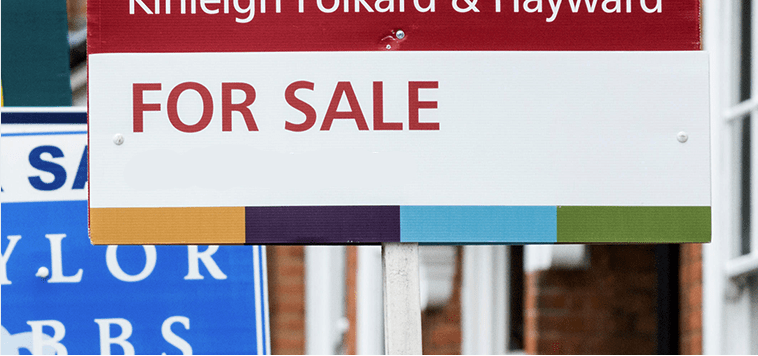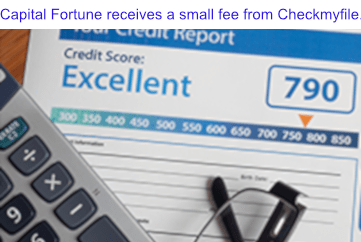Capital Fortune is a national and
award winning mortgage, buy-to-let
and insurance broker.
Call today to speak to an expert
0207 7 100 400
REQUEST A CALLBACK


What is Buy-To-Let
Buy-to-let is the name given to investment in residential property with the intention to rent it out to tenants in exchange for a monthly income and, over time, a potential uplift in the capital value of the property itself.
Tax breaks were introduced for landlords choosing to invest in the UK's private rented sector back in the 1990s under the Labour government. These included the right to claim tax relief at the rate you paid income tax against your mortgage interest. This is now reducing and there are plans afoot to disallow any relief claimed by landlords over the forthcoming years.
Despite this, buy-to-let still appears an attractive option for those looking to invest in property and generate a potential return. Buy-to-let investment has grown steadily over the past 20 years, with many new landlords investing in property across the UK.
Commercial Mortgages and some forms of Part Commercial & Buy to Let mortgages are not regulated by the Financial Conduct Authority.
How do landlords invest?
There are different ways to invest in buy-to-let. Some landlords choose to purchase properties in cash, allowing them to keep monthly rent as an income. Others borrow to fund the purchase of buy-to-let properties through specialist mortgages.
There are several types of buy-to-let mortgage including consumer buy-to-let, residential buy-to-let, semi-commercial buy-to-let, commercial buy-to-let and company buy-to-let, also sometimes called limited company buy-to-let.
Which one you take will depend on your individual circumstances and what is best for you. It can be complicated to navigate, so people can choose to use a specialist mortgage broker to help them.
It is still possible and generally preferable to use a buy-to-let mortgage to purchase a property you want to rent out. This is because the effect of 'gearing' your investment can make the potential returns that much better. The impact of gearing however, can increase the risk, particularly if properties ultimately fell in price and people should realise that buy to let is in fact an investment, with no certainty of future performance.



What Our Customers Say
Find out more
What is gearing?
Gearing is just another word for using debt or loans to invest with. In buy-to-let, it refers to the mortgage. Here's a very simple example to illustrate why gearing may be beneficial:
You have £100,000 to invest. You could purchase a property outright for cash or you could purchase four properties worth £100,000 each with a 75 per cent loan-to-value mortgage on each one. If property values rise by 10 per cent over two years, your capital appreciation would be £10,000 on the cash only purchase – one house.
But on the geared purchases, you'd make £10,000 on every property, a collective 40 per cent - £40,000 in capital appreciation.
Investing in multiple properties can also provide better income - so long as the rental income you earn exceeds your costs, including management fees, letting agent fees, voids, maintenance and mortgage interest. Any income you have left over after covering these costs will contribute to your profit; profit from four properties is likely to exceed profit from just one.
Profit
The issue is that many of the costs previously claimable such as mortgage costs may no longer be claimable in the future and you are advised to speak to an accountant or Independent Financial Adviser for assistance on the impact of taxation and what is in fact claimable as tax relief. This area is more fraught with difficulty.
How is buy-to-let taxed?
If you are interested in buy-to-let, you will probably be aware that it has been subject to several changes in tax treatment and regulation.
Stamp duty on buy-to-let
All buy-to-let purchases are now subject to a 3 per cent stamp duty surcharge. This makes the cost of acquisition higher than it used to be, particularly in areas where house prices are high.
You must remember to factor this additional cost into your calculations when considering a buy-to-let investment. Stamp duty is a one-off cost, so its impact will be felt more strongly over a short period of time.
If you plan to keep your buy-to-let property for a longer period of time, the effect of this cost will be lessened year by year because the impact of the lump sum can be spread out over more years.
Mortgage interest tax relief
From April 2017 the tax relief landlords can claim against their mortgage interest started to reduce. At the start of 2017, landlords paying the highest rate of income tax could claim back 45 per cent of their mortgage interest and higher rate tax payers could claim back 40 per cent.
By 2020 it is anticipated that this relief will be replaced with a tax credit up to a maximum of 20 per cent.
The change from tax relief to tax credit is important. Landlords now have to declare their rental income in total as taxable income and can then only reclaim a proportion of their mortgage interest costs from HMRC.
This is radically different from the previous situation when landlords deducted part of their mortgage interest from their rental income and then declared and paid tax on the remaining income.
This change is likely to have a material impact on the rate at which many landlords pay income tax.


Can I afford a buy-to-let mortgage?
When you apply for a buy-to-let mortgage, lenders are interested in whether the rent you charge covers your monthly mortgage payments. This is known as the rental income ratio.
The Bank of England governs the way that buy-to-let lenders assess mortgage affordability for landlords. They enforce rules that mean buy-to-let mortgage applications are assessed on strict affordability criteria.
While all lenders assess this slightly differently, most now require rental income to cover mortgage costs by a ratio of 145 per cent on a mortgage rate of 5.5 per cent. Some lenders don’t ask for a ratio this high however, and will accept a minimum rental income ratio of 125 per cent.
In the event that rental income does not cover this rental stress test, some lenders, may be prepared to accept personal income, to support any shortfall and this is why it can often be useful to speak to a specialist for assistance. These lenders will independently assess you and the property – they are interested in whether you earn any other income, what tax bracket you fall into and whether you have a spouse whose salary might also be taken into account.
These factors mean that the lender can flex the rental income ratio they need – so that it might be possible for this to be lower. Mortgage brokers have access to all of this information and will help you assess, exactly, what you can borrow.
These rules – known as buy to let affordability rules - only apply for landlords who purchase or re-mortgage buy-to-let properties in their own name.
Different criteria apply for those who own buy-to-let properties in a limited company structure or special purpose vehicle.


Larger portfolios
If you have mortgages on more than four buy-to-lets, you are likely to need to supply information on all of these mortgages when you remortgage one of them or if you purchase another one.
Some buy-to-let lenders allow you to use more than one property as security to borrow against. This allows you to lower the mortgage on one property and raise it on another for a new purchase for example. Over the whole portfolio of properties, this can mean you have a lower loan-to-value ratio.
Loan-to-value is the outstanding mortgage debt in relation to the value of the properties. The lower this is, the better the mortgage rate you may be offered.
Should I buy through a limited company?
There is no right or wrong way to invest in buy-to-let. The important thing is that you choose the option that suits your personal circumstances best.
Many landlords are now choosing to purchase property through a limited company or special purpose vehicle. This allows landlords to claim business expenses back in full, including mortgage costs. Corporation tax is payable on profits rather than revenue.
There are other costs associated with limited companies and profits that are taken out of the company as dividends will be subject to further tax.
Additionally, if you already own buy-to-let properties in your own name and wish to transfer them into a limited company structure, be careful and get independent tax advice.
You'll have to pay capital gains tax on any gains made on your existing properties because to effect a transfer into a limited company, you will have to sell the property to the company.
This may mean you also then have to pay stamp duty plus a 3 per cent surcharge as the new company is technically purchasing the properties from you as an individual. There are tax implications for your other income so it is worth seeking independent advice from a tax specialist before doing this.


What sort of property should I invest in?
There are almost endless types of buy-to-let properties available, from self-contained flats, family homes, student houses, housing for tenants receiving benefits, to flats over shops and even business premises.
Residential buy-to-let refers to any property with people living in it as their home. Semi-commercial buy-to-let tends to refer to a property like a shop or café with living accommodation above or below it.
Commercial buy-to-let refers to property that is rented out by a business. Commercial buy-to-let is a different prospect from residential buy-to-let and tend to be a bit more complicated. It’s a good idea to have a chat with a buy-to-let mortgage broker to find out more about each of these options as lenders can be restrictive if you’re new to the game.
There are a few golden rules when you invest in buy-to-let. Perhaps the most critical and often most overlooked is to make sure that the property you buy is matched to the sort of tenants who are looking in that area.
There is no point investing in a buy-to-let, simply because you like the property or area, if it is out of reach of people in the area’s price range. Equally, if you invest in housing for students in a family area, you’re less likely to attract tenants. For landlords, the single most expensive cost of owning a buy-to-let is void periods.
Voids are when the property is empty and no rent is coming in. If you have too many months of this and you could fall behind on your mortgage payments and ultimately lose the property.
If you are careful about matching the type of property to the tenants looking in the area you buy in, you should minimise the risk of voids.
Many landlords are branching out into more complex lets in a bid to increase their yields.
Houses in multiple occupation (where a house is divided into multiple, lockable rooms which are let separately), multi-let properties and semi-commercial properties all tend to attract higher rents.
There are additional costs involved and more onerous regulations - licensing is often required by local councils and the exact details of these can vary by location. For more on HMOs, multi-lets and semi-commercial lets, click here.
Should I get mortgage advice?
Investing in buy-to-let can be a potentially lucrative commercial decision but it is not without risk. The environment has become increasingly complicated in recent years. Lenders have begun to specialise in certain landlord 'types' and many will only accept a specific profile of property or landlord - be that beginner or professional.
It makes sense to speak to a professional adviser who can help you navigate and identify the best lender and mortgage for your needs, have access to a wider variety of mortgages and who can help you make the right choices.
Find Out Current Rates
YOUR HOME MAY BE REPOSSESSED IF YOU DO NOT KEEP UP REPAYMENTS ON YOUR MORTGAGE
Think carefully about securing other debts against your home. Your home or property may be repossessed if you do not keep up repayments on your mortgage or any other debts secured on it.
Commercial Mortgages and some forms of Part Commercial & Buy to Let mortgages are not regulated.



Get competitive rate mortgages
Award-winning
Mortgage Advisers
Fast Decisions
National Coverage
Holistic Approach
Comprehensive Panel
Direct Access to Underwriters
no obligation quotes






